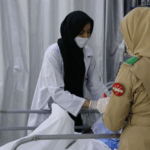Red Light Therapy: Find Out How it Works and Why it Is Important
There are so many treatments and therapies out there that it can be hard to keep up – which is why it’s important to keep an open mind and learn about new ones. One such up-and-coming treatment is red light therapy which is being piloted as an alternative therapy for several medical conditions. Read on to uncover the science behind this healing technique and the many benefits it has to offer.
What is Red Light Therapy?
Red light therapy is a form of treatment that uses red and near-infrared light to promote healing and relieve pain. It is also sometimes called low-level light therapy or photobiomodulation. Red light therapy has been shown to be effective in treating a variety of conditions, including wrinkles, acne, psoriasis and joint pain.
Red light therapy works by stimulating the production of ATP (adenosine triphosphate), which is the energy molecule that powers all cells in the body. When cells have more ATP, they are able to function at a higher level and heal more quickly. Red light therapy has also been shown to increase collagen production and reduce inflammation.
 There are many different ways to use red light therapy. It can be done with handheld devices, lamps or full-body panels. For the face, you could use a red light face mask like the Aduro LED Face Mask. The most important factor is that the device emits red light wavelengths at a specific frequency range that is therapeutic.
There are many different ways to use red light therapy. It can be done with handheld devices, lamps or full-body panels. For the face, you could use a red light face mask like the Aduro LED Face Mask. The most important factor is that the device emits red light wavelengths at a specific frequency range that is therapeutic.
What are the Benefits of Red Light Therapy?
There are many benefits of red light therapy, including its ability to:
- Stimulate collagen production: Red light therapy can increase collagen production, resulting in firmer, more youthful-looking skin;
- Improve skin texture: Red light therapy can improve the texture of your skin by reducing fine lines and wrinkles. A study concluded that after 8 weeks of regular use of a handheld RLT device, the appearance of photoaged skin was dramatically improved;
- Reduce inflammation: Red light therapy can soothe inflammation and reduce redness caused by acne or other conditions.
- Boost wound healing: Red light therapy has been shown to speed up the healing process of wounds and scars.
- Improve mental well-being: Research has shown that exposure to red light therapy has been shown to reduce symptoms of Seasonal Affective Disorder, Depression and Anxiety.
Risks and Precautions
There are virtually no side effects to red light therapy, including minor skin irritation and temporary redness. However, these side effects are typically mild and resolve within a matter of hours.
It is also important to be aware that red light therapy should not be used as a substitute for traditional medical care or treatment. If you have any concerns about your health, please consult with your doctor first.
Best Practices for using Red Light Therapy
Here are some tips to get the most out of your sessions:
- Schedule treatments at a time that works for you. Red light therapy is most effective when done on a regular basis. Find a time that works for you and stick to it.
- Make sure the area you are treating is clean and free of makeup or other products. This will help the light penetrate your skin more effectively.
- Don’t forget to wear sunglasses. The light can be bright, so make sure you protect your eyes.
- Drink plenty of water before and after your treatment. This will help your body flush out toxins and keep your skin hydrated.
Conclusion
Red light therapy is a revolutionary new technology that has been shown to have numerous benefits for the skin and overall health. From reducing fine lines and wrinkles to boosting collagen production, circulation and reducing chronic pain, this safe and simple treatment can be used in conjunction with your daily skincare routine to ensure that you are always looking radiant.
Further Reading:
Lou, Z., Zhang, C., Gong, T., Xue, C., Scholp, A., & Jiang, J. J. (2019). Wound-healing effects of 635-nm low-level laser therapy on primary human vocal fold epithelial cells: an in vitro study. Lasers in medical science, 34(3), 547–554. https://doi.org/10.1007/s10103-018-2628-0
Fernandes, M. P., Vidal, C. L., de Oliveira, T. T., Botelho, A. L., Valente, M. L. D. C., & Dos Reis, A. C. (2020). Effects of photobiomodulation on auriculotherapy points for sleep disorders, anxiety, and temporomandibular dysfunctions. Cranio : the journal of craniomandibular practice, 1–6. Advance online publication. https://doi.org/10.1080/08869634.2020.1853896
Colombo, E., Signore, A., Aicardi, S., Zekiy, A., Utyuzh, A., Benedicenti, S., & Amaroli, A. (2021). Experimental and Clinical Applications of Red and Near-Infrared Photobiomodulation on Endothelial Dysfunction: A Review. Biomedicines, 9(3), 274. https://doi.org/10.3390/biomedicines9030274
Sadick N. S. (2008). A study to determine the efficacy of a novel handheld light-emitting diode device in the treatment of photoaged skin. Journal of cosmetic dermatology, 7(4), 263–267. https://doi.org/10.1111/j.1473-2165.2008.00404.x

















